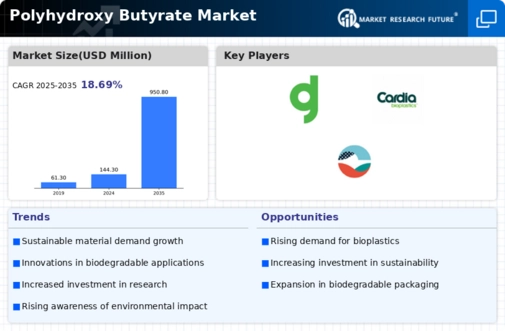-
Executive Summary
-
Market Introduction
-
Market Definition
- Assumptions &
-
Scope of the Study
-
Research Objectives
-
Limitations
-
Markets Structure
-
Key Takeaways
-
Market Research Methodology
-
Research
-
Process
-
Primary Research
-
Secondary Research
-
Market
-
Size Estimation
-
Forecast Model
-
Market Dynamics of the Global Polyhydroxy Butyrate Market
-
Introduction
-
Drivers
-
Restraints
-
Opportunities
-
Challenges
-
Trends/Technology
- Raw Material Suppliers
- Bargaining
- Bargaining Power
- Threat of Substitutes
-
Market Factor Analysis of the Global Polyhydroxy Butyrate Market
-
Supply Chain Analysis
-
Manufacturers/Producers
-
Distributors/Retailers/Wholesalers/E-Commerce
-
End User
-
Porter’s Five Forces Analysis
-
Threat of New Entrants
-
Power of Buyers
-
of Suppliers
-
Intensity of Competitive Rivalry
-
Pricing Analysis
-
Global Polyhydroxy Butyrate Market, by Type
-
Introduction
-
Powder
- Market Estimates & Forecast, 2020-2027
-
Market Estimates & Forecast, by Region, 2020-2027
-
Film
-
Market Estimates & Forecast, 2020-2027
-
Market Estimates & Forecast, by Region, 2020-2027
-
Sheet
-
Market Estimates & Forecast, 2020-2027
-
Market Estimates & Forecast, by Region, 2020-2027
-
Granules
-
Market Estimates & Forecast, 2020-2027
-
Market Estimates & Forecast, by Region, 2020-2027
-
Global
-
Polyhydroxy Butyrate Market, by End-Use Industry
-
Introduction
-
Packaging
- Market Estimates
-
Market Estimates & Forecast, 2020-2027
-
& Forecast, by Region, 2020-2027
-
Biomedical
- Market Estimates
-
Market Estimates & Forecast, 2020-2027
-
& Forecast, by Region, 2020-2027
-
Consumer goods
- Market Estimates
-
Market Estimates & Forecast, 2020-2027
-
& Forecast, by Region, 2020-2027
-
Agriculture
- Market Estimates
-
Market Estimates & Forecast, 2020-2027
-
& Forecast, by Region, 2020-2027
-
Others
- Market Estimates
-
Market Estimates & Forecast, 2020-2027
-
& Forecast, by Region, 2020-2027
-
Global Polyhydroxy
-
Butyrate Market, by Region
-
Introduction
- Market Estimates & Forecast, 2020-2027
- Market Estimates & Forecast, by Type, 2020-2027
- Market Estimates & Forecast, by End-Use Industry, 2020-2027
- US
-
North America
-
Market Estimates & Forecast, by Type, 2020-2027
-
Market Estimates & Forecast, 2020-2027
-
Europe
-
Market Estimates & Forecast, 2020-2027
-
Market Estimates & Forecast, End-Use Industry, 2020-2027
-
Canada
-
Market Estimates & Forecast, by Type, 2020-2027
-
Market Estimates & Forecast, by End-Use Industry, 2020-2027
-
Market Estimates & Forecast, 2020-2027
-
Market Estimates & Forecast, by Type, 2020-2027
-
Market Estimates & Forecast, by End-Use Industry, 2020-2027
-
Germany
-
Market Estimates & Forecast, 2020-2027
-
Market Estimates & Forecast, by Type, 2020-2027
-
Market Estimates & Forecast, by End-Use Industry, 2020-2027
-
France
-
Market Estimates & Forecast, by Type, 2020-2027
-
Market Estimates & Forecast, by End-Use Industry, 2020-2027
-
Italy
-
Market Estimates & Forecast, 2020-2027
-
Market Estimates & Forecast, by Type, 2020-2027
-
Market Estimates & Forecast, by End-Use Industry, 2020-2027
-
Spain
-
Market Estimates & Forecast, 2020-2027
-
Market Estimates & Forecast, by Type,2020-2027
-
Russia
-
Asia-Pacific
-
Market Estimates & Forecast, 2020-2027
-
North Africa
-
Latin America
-
Market Estimates & Forecast, by End-Use Industry, 2020-2027
-
UK
-
Market Estimates & Forecast, 2020-2027
-
Market Estimates & Forecast, by Type,2020-2027
-
Market Estimates & Forecast, by End-Use Industry, 2020-2027
-
Market Estimates & Forecast, 2020-2027
-
Market Estimates & Forecast, by Type,2020-2027
-
Market Estimates & Forecast, by End-Use Industry, 2020-2027
-
Poland
-
Market Estimates & Forecast, 2020-2027
-
Market Estimates & Forecast, by Type, 2020-2027
-
Market Estimates & Forecast, by End-Use Industry, 2020-2027
-
Rest of Europe
-
Market Estimates & Forecast, 2020-2027
-
Market Estimates & Forecast, by Type, 2020-2027
-
Market Estimates & Forecast, by End-Use Industry, 2020-2027
-
Market Estimates & Forecast, 2020-2027
-
Market Estimates & Forecast, by Type, 2020-2027
-
Market Estimates & Forecast, by End-Use Industry, 2020-2027
-
China
-
Market Estimates & Forecast, 2020-2027
-
Market Estimates & Forecast, by Type, 2020-2027
-
Market Estimates & Forecast, by End-Use Industry,
-
India
-
Market Estimates & Forecast, 2020-2027
-
Market Estimates & Forecast, by Type, 2020-2027
-
Market Estimates & Forecast, by End-Use Industry, 2020-2027
-
Japan
-
Market Estimates & Forecast, by Type, 2020-2027
-
Market Estimates & Forecast, by End-Use Industry, 2020-2027
-
Australia & New Zealand
-
Market Estimates & Forecast, 2020-2027
-
Market Estimates & Forecast, by Type, 2020-2027
-
Market Estimates & Forecast, by End-Use Industry, 2020-2027
-
Rest of Asia-Pacific
-
Market Estimates & Forecast, 2020-2027
-
Market Estimates & Forecast, by Type, 2020-2027
-
Market Estimates & Forecast, by End-Use Industry, 2020-2027
-
Middle East & Africa
- Market Estimates & Forecast, 2020-2027
- Market Estimates & Forecast, by Type, 2020-2027
- Market Estimates & Forecast, by End-Use Industry, 2020-2027
- GCC
- Israel
- Turkey
- Rest of Middle East & Africa
- Market Estimates & Forecast, 2020-2027
- Market Estimates & Forecast, by Type, 2020-2027
- Market Estimates & Forecast, by End-Use Industry, 2020-2027
- Brazil
- Argentina
-
Market Estimates & Forecast, by Type, 2020-2027
-
Market Estimates & Forecast, 2020-2027
-
Market Estimates & Forecast, by End-Use Industry, 2020-2027
-
Mexico
-
Market Estimates & Forecast, by Type, 2020-2027
-
Market Estimates & Forecast, by End-Use Industry, 2020-2027
-
Rest of Latin America
-
Market Estimates & Forecast, 2020-2027
-
Market Estimates & Forecast, by Type, 2020-2027
-
Market Estimates & Forecast, by End-Use Industry, 2020-2027
-
Company
-
Landscape
-
Introduction
-
Market Key Strategies
-
Key Development Analysis (Expansion/Merger & Acquisitions/Joint Venture/New
-
Product Development/Agreement/Investment)
-
Company
-
Profiles
-
BASF SE
- Company Overview
- Key Developments
-
Financial Updates
-
Product/Business Segment Overview
-
Key Strategies
-
SWOT Analysis
-
Kaneka Corporation
- Financial
- Product/Business
- Key Strategies
- SWOT Analysis
- Company Overview
- Key Developments
-
Company Overview
-
Updates
-
Segment Overview
-
Key Developments
-
Biome Technologies PLC
-
Financial Updates
-
Product/Business Segment Overview
-
Key Strategies
-
SWOT Analysis
-
PolyFerm Canada
- Company Overview
- Key Developments
-
Financial Updates
-
Product/Business Segment Overview
-
Key Strategies
-
SWOT Analysis
-
FULL CYCLE BIOPLASTICS
- Company Overview
- Key Developments
-
Financial Updates
-
Product/Business Segment Overview
-
Key Strategies
-
SWOT Analysis
-
Cardia Bioplastics
- Financial
- Product/Business
- Key Strategies
- SWOT Analysis
- Financial
- Product/Business
- Key Strategies
- SWOT Analysis
- Financial
- Product/Business
- Key Strategies
- SWOT Analysis
-
Company Overview
-
Updates
-
Segment Overview
-
Key Developments
-
Tianjin GreenBio Materials Co., Ltd
-
Company Overview
-
Updates
-
Segment Overview
-
Key Developments
-
TianAn Biologic Materials Co., Ltd.
-
Company Overview
-
Updates
-
Segment Overview
-
Key Developments
-
Green Dot Bioplastics
- Company Overview
- Key Developments
-
Financial Updates
-
Product/Business Segment Overview
-
Key Strategies
-
SWOT Analysis
-
AGRANA Beteiligungs-AG
- Company Overview
- Key Developments
-
Financial Updates
-
Product/Business Segment Overview
-
Key Strategies
-
SWOT Analysis
-
Conclusion
-
LIST
-
OF TABLES
-
Global
-
Polyhydroxy Butyrate Market, by Region, 2020-2027
-
Table 2
-
North America: Polyhydroxy Butyrate Market, by Country, 2020-2027
-
Table
-
Europe: Polyhydroxy Butyrate Market, by Country, 2020-2027
-
Table
-
Asia-Pacific: Polyhydroxy Butyrate Market, by Country, 2020-2027
-
Table
-
Middle East & Africa: Polyhydroxy Butyrate Market, by Country,
-
Latin America: Polyhydroxy Butyrate
-
Market, by Country, 2020-2027
-
Global Polyhydroxy
-
Butyrate Type Market, by Regions, 2020-2027
-
Table 8
-
North America: Polyhydroxy Butyrate Type Market, by Country, 2020-2027
-
Table
-
Europe: Polyhydroxy Butyrate Type Market, by Country, 2020-2027
-
Table10
-
Asia-Pacific: Polyhydroxy Butyrate Type Market, by Country, 2020-2027
-
Table11
-
Middle East & Africa: Polyhydroxy Butyrate Type Market, by Country, 2020-2027
-
Table12
-
Latin America: Polyhydroxy Butyrate Type Market, by Country, 2020-2027
-
Table13
-
Global Polyhydroxy Butyrate End-Use Industry Market, by Regions, 2020-2027
-
Table14
-
North America: Polyhydroxy Butyrate End-Use Industry Market, by Country, 2020-2027
-
Table15
-
Europe: Polyhydroxy Butyrate End-Use Industry Market, by Country, 2020-2027
-
Table16
-
Asia-Pacific: Polyhydroxy Butyrate by End-Use Industry Market, by Country, 2020-2027
-
Table17
-
Middle East & Africa: Polyhydroxy Butyrate End-Use Industry Market, by Country,
-
Table18 Latin America: Polyhydroxy Butyrate
-
End-Use Industry Market, by Country, 2016-2023
-
Table19
-
Global Type Market, by Region, 2020-2027
-
Table20 Global
-
End-Use Industry Market, by Region, 2020-2027
-
Table21
-
North America: Polyhydroxy Butyrate Market, by Country, 2020-2027
-
Table22
-
North America: Polyhydroxy Butyrate Market, by Type, 2020-2027
-
Table23
-
North America: Polyhydroxy Butyrate Market, by End-Use Industry, 2020-2027
-
Table24
-
Europe: Polyhydroxy Butyrate Market, by Country, 2020-2027
-
Table25
-
Europe: Polyhydroxy Butyrate Market, by Type, 2020-2027
-
Table26
-
Europe: Polyhydroxy Butyrate Market, by End-Use Industry, 2020-2027
-
Table27
-
Asia-Pacific: Polyhydroxy Butyrate Market, by Country, 2020-2027
-
Table28
-
Asia-Pacific: Polyhydroxy Butyrate Market, by Type, 2020-2027
-
Table29
-
Asia-Pacific: Polyhydroxy Butyrate Market, by End-Use Industry, 2020-2027
-
Table30
-
Middle East & Africa: Polyhydroxy Butyrate Market, by Country, 2020-2027
-
Table31
-
Middle East & Africa: Polyhydroxy Butyrate Market, by Type, 2020-2027
-
Table32
-
Middle East & Africa: Polyhydroxy Butyrate Market, by End-Use Industry, 2020-2027
-
Table33
-
Latin America: Polyhydroxy Butyrate Market, by Country, 2020-2027
-
Table34
-
Latin America: Polyhydroxy Butyrate Market, by Type, 2020-2027
-
Table35
-
Latin America: Polyhydroxy Butyrate Market, by End-Use Industry, 2020-2027
-
LIST
-
OF FIGURES
-
Global Polyhydroxy
-
Butyrate Market Segmentation
-
Forecast
-
Research Methodology
-
Five Forces Analysis
-
of the Global Polyhydroxy Butyrate Market
-
FIGURE 4
-
Value Chain of the Global Polyhydroxy Butyrate Market
-
FIGURE 5
-
Global Polyhydroxy Butyrate Market, 2020-2027, by Country, 2020
-
FIGURE
-
Share of the Global Polyhydroxy Butyrate Market, by Type, 2020-2027
-
FIGURE
-
Global Polyhydroxy Butyrate Market Size, by Type, 2020
-
FIGURE
-
Share of the Global Polyhydroxy Butyrate Market, by Type, 2020-2027
-
FIGURE
-
Global Polyhydroxy Butyrate Market Size, by End-Use Industry,
-
FIGURE10 Share of the Global Polyhydroxy Butyrate Market,
-
by End-Use Industry, 2020-2027

















Leave a Comment